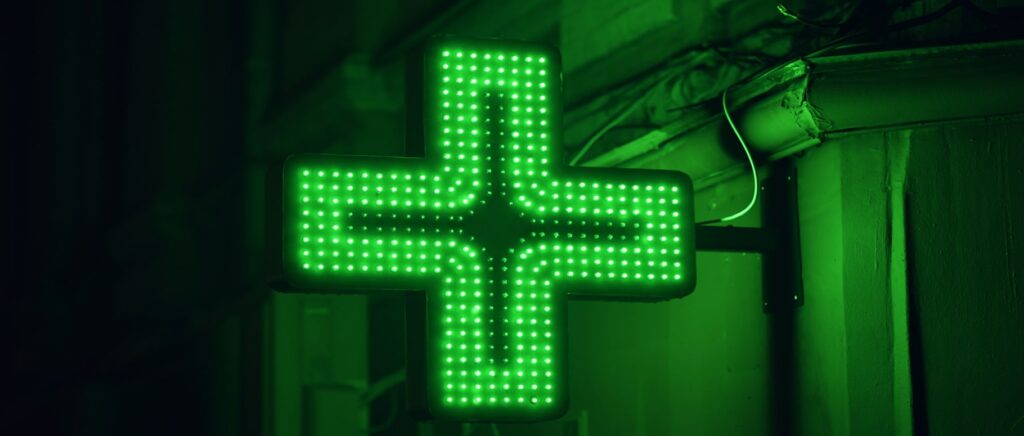
Pharmacist or non-pharmacist?
In many countries in the WHO European Region, ownership of an out-of-hospital pharmacy is limited to a pharmacist or group of pharmacists. The main advantage of this approach is that it creates the conditions for a high level of professionalism. It is believed that the corporate owner of the pharmacy can direct the staff to be guided solely by the pursuit of profit, relegating the health of the individual patient and the community to the background. Whereas a pharmacist with professional experience and responsibility, as well as a reputation, will have the patient’s best interests at heart.
In 2009, restrictions on pharmacist-only pharmacy ownership in Germany and Italy were challenged in the European Court of Justice. However, the court ruled that it could be justified for the purpose of ensuring the reliability and high quality of the supply of medicines to the public. The court ruling noted:
“There is no doubt that the pharmacist, like other persons, pursues the goal of making a profit. However, by virtue of his professional affiliation, he organizes the activities of the pharmacy not only for economic purposes, but also from a professional position. Thus, his private interest in making a profit is tempered by his training, his professional experience and responsibility, and the fact that any violation of the rules of law or professional behavior weakens not only the value of his investment but also his own existence as a professional. Non-pharmacists by definition do not have the proper training, experience and responsibility, hence they do not provide the same safeguards as pharmacists.”
According to the European Court of Justice, the right to decide who can own a pharmacy has been left to the discretion of the public authorities. As a result, it was retained in Germany and some other countries, while in Portugal and Italy, for example, the possibility of pharmacy ownership was granted to non-pharmacists (in 2007 and 2016, respectively).
In contrast, other countries, such as Hungary, Estonia and Poland, have, over the last decade, abandoned the liberalized system in favour of limiting the ownership of out-of-hospital pharmacies. In Hungary, the transition of ownership was gradual: pharmacists had to own at least 25% of the pharmacy until 2014, and 50% until 2017 . In a number of other countries, including Austria, Hungary and Latvia, the only legal restriction is that the controlling interest must be owned by pharmacists.
Ownership of a pharmacy license
In most countries, the pharmacy license is owned by individuals (or a company), but in a few countries in the WHO European Region, it remains in the ownership of the State and cannot be transferred without the approval of the competent authority. In these countries, the situation can be described as a non-transferable “concession” of pharmacy licenses that are owned by the State.
For example, in Finland, a license is issued by the Finnish Medicines Agency Fimea to a specific person without the right to sell or lease it, and the obligations of the license cannot be transferred to a third party. A license may be terminated or become vacant in two ways: when the pharmacist holding it turns 68 years of age or when he or she obtains a license for a new pharmacy. When a license becomes vacant, Fimea announces the opportunity to apply and issues it in accordance with the criteria defined by the Medicines Act. In addition, Fimea makes decisions based on an assessment of the need to establish new pharmacies and subsidiary pharmacies/pharmacy branches. This approach allows for rational planning of the pharmacy infrastructure.
In Luxembourg, the majority of out-of-hospital pharmacies operate under concession. When a concession becomes available, the Ministry of Health publishes its parameters with the location of the pharmacy, the timeframe for the pharmacy to start operating and specific provisions governing the granting and management of the concession.
Both of these models require the payment of a license fee to the state. In Finland, pharmacies pay a pharmacy tax to the state, and the total revenue to the state from this tax is approximately EUR 175 million per year. The tax rate depends on the annual turnover from the sale of prescription and over-the-counter drugs and increases as it increases. In Luxembourg, the pharmacy tax (redevance) is 2% of the adjusted annual turnover of a pharmacy (certain types of medicines are not included in the calculation of the annual levy).
In Slovenia, some pharmacies are subject to a concession that can be granted to pharmacists or companies in which 50% of the share capital is owned by the pharmacist. The concession is granted for a period of 15 to 30 years. However, unlike in Luxembourg and Finland, the decision to create a concession is made locally by one or more municipalities.
In Denmark, the pharmacy license is the property of the state and only the pharmacist can be the owner of the pharmacy. In case he/she acquires a new pharmacy or in case of death of the owner, the license is returned to the state. In this model, the conditions under which premises, equipment and stock can be transferred to a new licensee are set at the regulatory level.
In some cases, there are legal and regulatory provisions designed to ensure that a pharmacy can be maintained for a certain period of time in exceptional circumstances (such as the death of the owner) so that the heirs can sell it. Such rules apply in France: “After the death of the pharmacist, the spouse or heirs may maintain the pharmacy for a maximum of two years under the direction of a managing pharmacist acting with the authorization of the head of the regional health authority.” Similar regulations apply in Germany: after the death of the owner, the heirs may invite a pharmacist to manage the pharmacy for a maximum period of 12 months. In addition, to ensure continuity, if one of the children is under 23 years of age and is studying pharmacy, the pharmacy can be run by an external specialist until the heir becomes a pharmacist.
Private and public pharmacies
In a number of countries, some out-of-hospital pharmacies are owned (directly or indirectly) by the state or local authorities (municipalities). In some former Yugoslav republics, a significant number of out-of-hospital pharmacies are still owned and operated by the state. In Croatia, state-owned pharmacies account for approximately 20% of the total number of pharmacies. In Slovenia, they are called “community pharmacies” and are operated by an organization owned by one or more municipalities. Similar regulations and organization are in place in Serbia.
In Italy, municipalities own a number of out-of-hospital pharmacies called farmacie comunali. They were originally established by the municipality to serve areas without adequate access to pharmacist services; most of them are located in the center of the northern part of the country. On average, they represent approximately 20% of the total number of pharmacies, but in Cremona, for example, 14 of the 20 out-of-hospital pharmacies are owned by the city. In recent times, these municipal pharmacies have been sold to chains (as in Milan), which have acquired 80% of their shares for a period of 99 years. In this situation there is a risk (for cities like Cremona) of forming a monopoly in favor of a buyer such as a pharmacy chain.
In Sweden, all pharmacies were state-owned and owned by the state-owned company Apoteket AB until 2009, when the government decided to liberalize the sector in a process called “re-regulation”. As a consequence, approximately two-thirds of all pharmacies are now owned by private companies through several chains. The remaining part is owned by the national government in the person of Apoteket AB.
In some countries, pharmacies are owned by cooperatives; they can represent a significant market share, as in Belgium, where it is as high as 20%.
In France, for historical reasons, there are exceptions to the rules limiting ownership of out-of-hospital pharmacies:
- 37 out-of-hospital pharmacies belong to the Miners’ Health Insurance Fund (pharmacie minière);
- 51 is owned by mutual insurance societies (pharmacie mutualiste).
These pharmacies originated at least 40 years ago and can only dispense medications to individuals insured by the owning company.
In Finland, each of the two universities Helsinki and Eastern Finland is allowed to own one pharmacy, with the University of Helsinki pharmacy being allowed to have up to 16 branches.
Shutterstock/FOTODOM UKRAINE photos were used
Read also: Pharmacy licenses in the WHO European Region Pharmacy education Pharmacy network planning Promoting rural pharmacies: experiences from countries in the WHO European Region.



